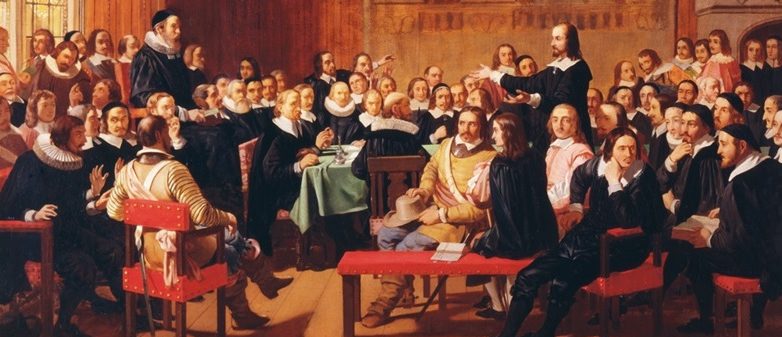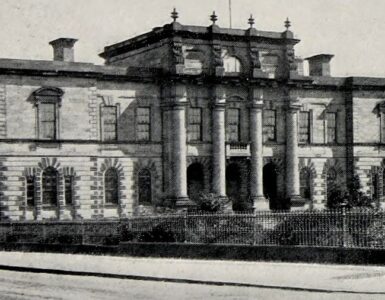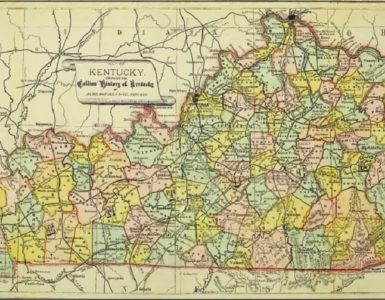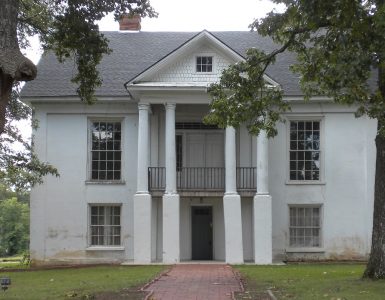 Abel McIver Fraser was born in Sumter, South Carolina, June 14, 1856, to Thomas Boone and Sarah Margaret McIver Fraser. For many years Abel’s father was a Presbyterian ruling elder working in various judicatory committees and was a director of Columbia Theological Seminary, while professionally he was a lawyer, a judge for sixteen years, and he served in both chambers of the South Carolina State House. Abel was prepared for college by Thomas P. McQueen until at the age of sixteen he left home and crossed into North Carolina to pursue his studies at Davidson College earning his B. A. in 1876. While a freshman he professed his faith in Christ in the Presbyterian Church in Davidson. Woodrow Wilson was a classmate and friend of Abel for about a year, but due to the influence of Wilson’s father and his maternal uncle, James Woodrow, the future United States President returned home to finish his college studies later at Princeton. For a year after college graduation Fraser taught school in North Carolina.
Abel McIver Fraser was born in Sumter, South Carolina, June 14, 1856, to Thomas Boone and Sarah Margaret McIver Fraser. For many years Abel’s father was a Presbyterian ruling elder working in various judicatory committees and was a director of Columbia Theological Seminary, while professionally he was a lawyer, a judge for sixteen years, and he served in both chambers of the South Carolina State House. Abel was prepared for college by Thomas P. McQueen until at the age of sixteen he left home and crossed into North Carolina to pursue his studies at Davidson College earning his B. A. in 1876. While a freshman he professed his faith in Christ in the Presbyterian Church in Davidson. Woodrow Wilson was a classmate and friend of Abel for about a year, but due to the influence of Wilson’s father and his maternal uncle, James Woodrow, the future United States President returned home to finish his college studies later at Princeton. For a year after college graduation Fraser taught school in North Carolina.
Abel Fraser left North Carolina and returned to his home state to attend Columbia Theological Seminary. During his time of studying in the seminary building in Columbia–currently a house museum known as the Robert Mills House–he was examined and licensed by Harmony Presbytery in April 1879. He completed his divinity program in 1880 then left South Carolina to relocate to Kentucky where West Lexington Presbytery ordained him for ministry in the Mt. Horeb Church, May 12, 1881. The church had been organized in the home of Mary Cabell Breckinridge. That July, Abel married Octavia T. Blanding who was also from Sumter, South Carolina. Her mother was Leonora McFadden and her father was a Presbyterian elder, Col. James Douglas Blanding, who practiced law for many years in Sumter. Music must have been one of their common interests because in later years when a new Mt. Horeb Church building was dedicated to replace the previous one that had been destroyed by fire, the congregation sang a hymn that had been composed by the Frasers. As with so many pastors shepherding rural churches, Fraser supplied additional pulpits including the churches in Walnut Hill, 1885-1890, and Bethel, 1890-1893.
Resigning his call to Mt. Horeb Church, Rev. Fraser moved the household to Staunton (pronounced “Stanton”), Virginia, for his next call. Staunton was a key city for the distribution of Presbyterian churches as the Scots-Irish migrated south through the Shenandoah Valley from Pennsylvania and settled along the route in Virginia, North Carolina, Georgia, and South Carolina. Staunton’s First Presbyterian Church was organized in 1804 after several years of informal meetings with its first building completed a few years later on the corner of Market and Frederick Streets. By the time of Fraser’s ministry, the congregation was worshiping in a sanctuary completed in 1871. The Staunton Church had been served at one time by Rev. Joseph R. Wilson who was the father of Abel’s friend at Davidson, Woodrow Wilson.
The year the Frasers’ moved to Virginia, 1893, saw President Grover Cleveland inaugurated in the midst of a severe economic depression for his second non-consecutive term. But despite the dismal economy, President Cleveland had the pleasure of pressing a button to illuminate 100,000 costly electric lights at The World’s Columbian Exposition in Chicago. Electricity would replace candles and gas for light in the world, and in the churches the tithe would replace pew sales or rentals. Presbyterians, as well as those of other denominations, had supported the work of their churches by buying or renting pews to provide funds to operate the churches. By Fraser’s era, the practice was dwindling but his new church was still holding to the tradition. However, a ruling elder proposed abolishing the pew system and replacing it with a voluntary offering. Rev. Fraser supported the change and once it was put into practice he continued to draw attention to the tithe in his sermons. For example, in 1922 one of his sermons was published in The Biblical Review with the title, “The Spiritual Side of the Tithe.”
One special event that occurred during A. M. Fraser’s ministry took place from April 29 to May 2, 1897, when the Synod of Virginia celebrated in his church the 250th anniversary of the Westminster Assembly. The special series began on Thursday evening with Dr. Frazer leading the meeting and Dr. Francis R. Beattie of Louisville Seminary in Kentucky delivering the first discourse. Over the next few days people gathered to hear additional speakers that included Dr. T. C. Johnson of Union Seminary in Farmville, Dr. Thornton Whaling of the Lexington Church which is about fifty miles down (“up” for locals) the Shenandoah Valley from Staunton, Dr. George Finley of the Tinkling Spring Church near Staunton, Dr. John M. Wells of Second Church in Staunton, and the ministers of two other nearby churches, Rev. R. A. Lapsley of Bethel Church and Dr. J. E. Booker of Hebron Church. The celebration ended on Sunday and all the Presbyterian Churches of the vicinity closed so members could attend the special meetings in Staunton. The morning service was led by Dr. G. B. Strickler of Union Seminary, which was followed that afternoon by a joint Sunday School meeting for the children. The editor of the Central Presbyterian newspaper spoke to the children and he distributed certificates to those who had recited the Westminster Shorter Catechism. That evening the service was led by Dr. Moses D. Hoge who was the minister of Second Presbyterian Church in Richmond.
As his years of ministry passed, Dr. A. M. Fraser’s qualifications and reputation resulted in other churches and ministries taking an interest in obtaining him for their work. In 1901 the First Presbyterian Church in Macon, Georgia, issued a call to Rev. Fraser but at the request of the Staunton session, he turned it down. With respect to his connectional relationships in the Presbyterian Church in the United States (PCUS) he was selected the Executive Secretary of Foreign Missions and in 1911 Columbia Theological Seminary offered him its presidency, but both positions were turned down due to appeals from his congregation to stay. In 1918 Hampden-Sydney College sought him for a professorship, but once again, the flock requested that he remain with them so he heeded the call of his sheep. His popularity not only led to other ministries seeking him, but it also resulted in speaking engagements. In 1914 he delivered the Baccalaureate Sermon during commencement week at Hampden-Sydney College. At the 1909 PCUS General Assembly in Savannah several speakers, including A. M. Fraser, delivered lectures in honor of the four-hundredth anniversary of John Calvin’s birth. His address was titled, “How May the Principles of Calvinism be Rendered Most Effective Under Modern Conditions.” In 1925, he gave the Smyth Lectures at Columbia Seminary–named for Dr. Thomas Smyth of Second Presbyterian Church in Charleston, South Carolina–on the subject of church unity.
Rev. Fraser not only shepherded his flock but was also greatly concerned for education. Across the street from First Church is located what is currently named Mary Baldwin University. Originally, when the school was founded through the efforts of a Presbyterian, Rev. Rufus W. Bailey, in 1842, it was named Augusta Female Seminary (for Augusta County). Two years after Dr. Fraser arrived in Staunton, Augusta Female Seminary was renamed Mary Baldwin Seminary. Mary Baldwin had been its principal for many years and led the institution through the tumult of the Civil War and some trying financial times. When Principal Baldwin passed away in 1899, Dr. Fraser wrote a memorial for her that was published in Union Seminary Magazine. Over the course of his ministry he had been a member of the Mary Baldwin Seminary board for 27 years, 11 of which he was its president, then when the name was changed to Mary Baldwin College in 1923 he became its first president. He was also a board member of Washington and Lee University in Lexington, Virginia, Centre College in Kentucky gave him the Doctor of Divinity in 1896, and then he was on the board of Hampden-Sydney College which in 1921 honored him with the Doctor of Laws.
Dr. A. M. Fraser’s churchmanship began with his ministry in Kentucky where he was moderator of West Lexington Presbytery in 1881. Shortly after his move to Virginia he was moderator of Lexington Presbytery in 1894, and then the Synod of Virginia in 1903. When the PCUS General Assembly met in New Orleans in 1919, he was elected moderator and received the gavel from retiring Moderator James I. Vance, who was then the pastor of First Presbyterian Church, Nashville. When Dr. Fraser delivered his retiring moderator’s sermon to the assembly in Charlotte in 1920, it was titled, “Called to be Saints,” and his text was Romans 1:7.
Rev. A. M. Fraser continued in Staunton until his retirement in 1931 having served over thirty-five years. He died on November 18, 1933. He was survived by Octavia who would pass away in 1939. They had enjoyed the births of six children, three girls and three boys—Leonora Blanding, Margaret McIver, Jean Blanding, Thomas Boone, Douglas DeSaussure, and Abel McIver who died in infancy. It is unfortunate, but Dr. Fraser may come across to readers only as a busy and what might be called today a victim of OCD, but the impression given by the resources consulted and his sermons is one of patience and great pastoral concern. Sometimes such characteristics are difficult to put into words.
In addition to the publications by Fraser already mentioned are some articles published in Union Seminary Magazine that include, “Calvinism: A Bible Study,” 1901, “The Louisville Assembly,” 1911, “The Tithe,” 1919, and “Servant of Christ and His Church,” 1926. An undated tract, What is to be Your Life’s Work? Why Not the Ministry, was published by the PCUS Executive Committee of Christian Education. His lecture, “Dr. Thornwell as an Ecclesiologist,” was delivered to the Synod of South Carolina in 1912 as one of three lectures honoring the 100th anniversary of Thornwell’s birth. These lectures were published at the time and have been reprinted in The Confessional Presbyterian, vol. 9, 2013. It appears that his only book was a small volume of his sermons edited by Rev. William E. Hudson and titled, Doctor Fraser and His Sermons, which was published circa 1920 by Fleming H. Revell.
Barry Waugh
For a PDF copy of Doctor Fraser and His Sermons, which was published in his honor in 1920,
Additional titles are available from the Log College Press website, “Abel McIver Fraser (1856-1933).”
Notes–The header shows the Westminster Assembly as provided courtesy of Reformation Art. Frank Robbins Pancake, A Historical Sketch of the First Presbyterian Church, Richmond, [1954]. Other sources include, Sketch of Mt. Horeb Presbyterian Church, 1827-1952, Commemorating the One-Hundredth and Twenty-Fifth Anniversary…[etc.], Lexington, 1953; the hymn composed by the Frasers mentioned in the biography is in this booklet. The First Presbyterian Church, Staunton, Virginia, Material Gathered and Arranged by Arista Hoge, Staunton, 1908. Fraser’s Calvin 400th address was published in, Calvin Memorial Addresses: Delivered Before the General Assembly of the Presbyterian Church in the United States at Savannah, Georgia, May 1909, Richmond: Presbyterian Committee of Publication, 1909. The portrait of Fraser and bibliographical information were provided by Wayne Sparkman, PCA Historical Center, St. Louis. The photograph of Mt. Horeb Church’s historical marker is the author’s.





